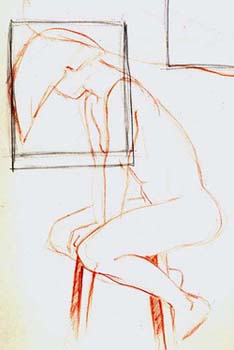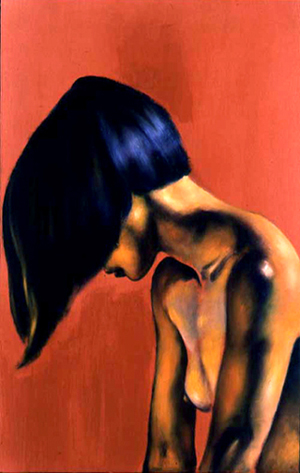ROBERT
COANE
-
IT'S ALL ABOUT DRAWING
-
"Drawing was his way of making something his own..." - Robertson Davies in What's Bred in the Bone
|
I
sketch from the model with no particular purpose in mind, an idea I
got reading that Rodin used to have models constantly around the studio
just to observe them. Except for the heads, back and profile, I never
pose them. They mostly do what they like, whatever comes naturally to
them. I never use a timer. They time themselves and brake or stretch
when they want to. I will sometimes distract them with idle talk and
when I catch them in some truly spontaneous gesture I freeze them and
sketch. The variety in poses then becomes endless. So is their source.
|
|
Study
of Hsin-Hsin #1
|
When
I find an interesting "fragment" I ask the model to strike
that pose and start painting. I never invent a pose (they always look
unnatural and, well, "posed") and never ask one model to
take another’s pose (which looks just as plastic). It becomes
a collaboration of sorts. |
| > |
> |
> |
IT'S
ALL ABOUT DRAWING |
ROBERT COANE © All rights reserved

